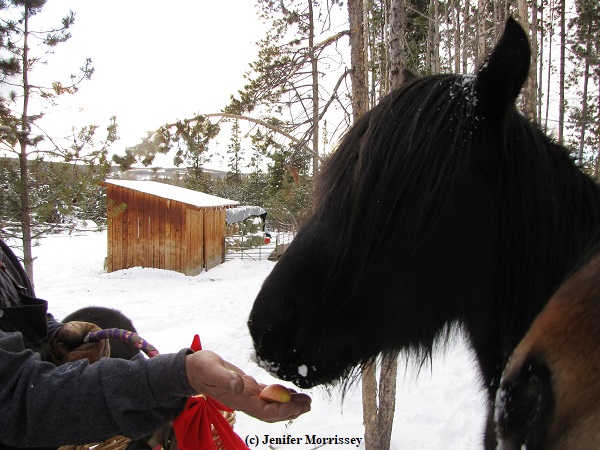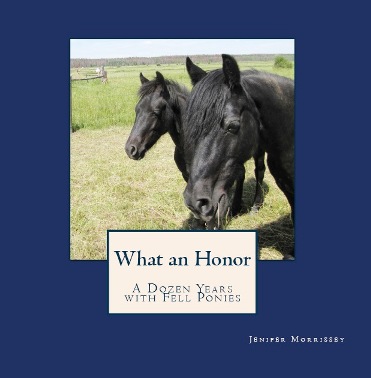The red line shows that there is a very slight hoof arch in Rose’s foot after several weeks of daily rides on a somewhat hard surface. The hoof arch assists with impact absorption.
A light bulb went off when I finally understood what I was reading. I had seen it but never realized what caused it. Brilliant! A pony hoof is even more dynamic than I realized! I was thankful again for the many hooves I’ve trimmed so that I could understand what was being described.
I am grateful to a fellow Fell Pony enthusiast for the book I am reading with the title Insight to Equus: Holistic Veterinary Perspectives on Health and Healing. I am in the midst of a long section on the equine hoof where the author is making the case for equines living a barefoot life. I have always found that approach to make sense. I am familiar with the experience of many owners that equines living barefoot often maintain their own hooves in near optimal condition. Dr. Tomas Teskey repeatedly makes the point, though, that the ground conditions have to be right for this outcome. My ponies have never lived on the right sort of ground for them to not need trimming.
One of the many incredibly important observations Dr. Teskey makes in his book about a natural hoof is that it is beautifully designed to absorb impact. It is not a rigid structure which is why a horseshoe which is rigid can be such a detriment to the health of the hoof as well as the horse as a whole. In fact the equine hoof has a number of structures inherent in it that enable it to absorb impact. One of those is a hoof arch.
Dr. Teskey says that hoof arches are typically seen only on barefoot horses running on dry rough ground that are not conventionally trimmed. So many of us are taught that a hoof should have a flat surface where it hits the ground, and we are taught to file to that sort of flat surface when balancing the hoof. Not so fast, says Dr. Teskey! Equines running on dry rough ground need all the advantage they can get from their hooves to absorb impact, and because hooves are not rigid, they can and do expand when encountering a rough surface and then contract again as they become airborne. When we trim, of course, we are trimming in that airborne phase, so we aren’t actually seeing the plane of the hoof that meets the ground. “Picking them up and looking from the side is a good way to see and feel the arch… In healthy hooves, the arch flattens slightly as the hoof bears maximum weight… During hoof flight, … structures recoil back to their original shape and are ready to immediately engage the ground again.” (1) Dr. Teskey also describes many other ways in which the arch assists healthy equine activity.
Once I understood what he was talking about, I couldn’t wait to go out and look at my ponies’ hooves. Our ground this winter has been pretty soft, so the only pony I expected to see an arch on was my mare Rose that I am riding regularly on the ranch lane and a nicely graveled trail. The picture here shows a very slight arch in Rose’s foot. Awesome! I then confirmed that all my other ponies have very flat hoof surfaces.
From now on when I trim, I will watch for a hoof arch and not file it away if it exists. If they have it, they obviously need it for the life they are leading. I am thinking about trimming and hooves with new appreciation!
Teskey, Tomas G., D.V.M. Insight to Equus: Holistic Veterinary Perspectives on Health and Healing. Self-published, insighttoequus.com, 2019, p. 102
© Jenifer Morrissey, 2020
You can find more discussions about holistic pony ownership in my book The Partnered Pony, available internationally by clicking here or on the book cover.










